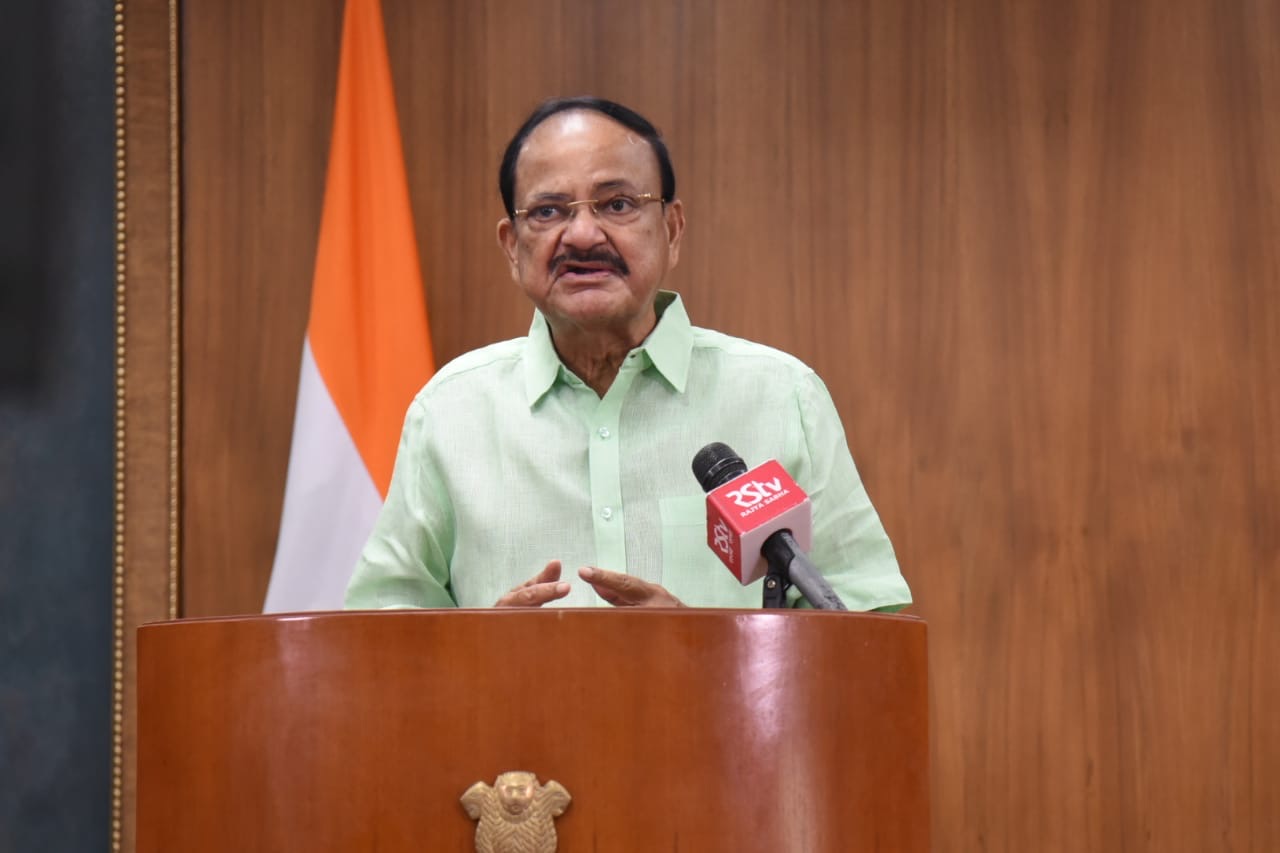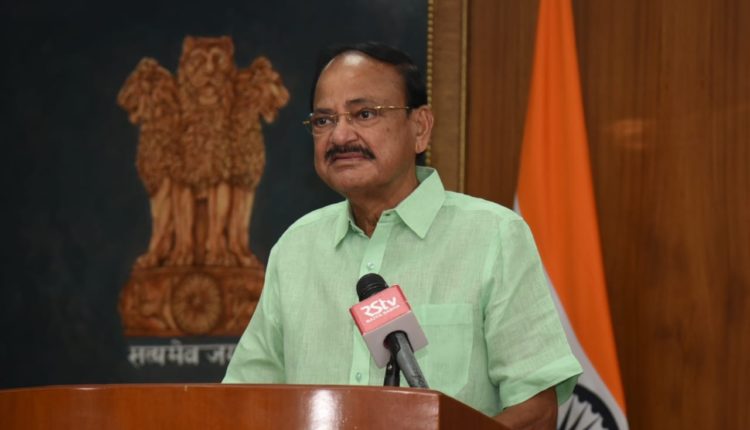 “Promote renewable energy sources in the upcoming building projects and calls for the adoption of Green and Sustainable Architecture.”
“Promote renewable energy sources in the upcoming building projects and calls for the adoption of Green and Sustainable Architecture.”
The Vice President of India, Shri M Venkaiah Naidu today called upon the architects of the country to adopt and promote Green Architecture. He said that the use of renewable energy sources such as solar energy should be promoted in the upcoming building projects.
Virtually addressing the inaugural ceremony of the National Convention of the Indian Institute of Architects: IIA NATCON 2020 – TRANSCEND, the Vice President emphasized the need to strike the right balance between aesthetics and sustainability in any structure.
Recalling the evolution of Indian Architecture right from Indus Valley Civilization to the Konark Sun Temple to modern times, Shri Naidu said that our country is home to many monuments which were created by artisans using local materials and techniques. He described the architecture as one of the most enduring achievements of any Civilization.
Calling for the creation of a self-reliant, resilient and inclusive architecture, the Vice President asked the professionals to draw inspiration from India’s diverse architecture and take the legacy forward by adopting the designs and concepts that are environment-friendly and best suited to the needs of the people.
Lauding the Government’s flagship programs such as Smart Cities & ‘Housing for all’, Shri Naidu highlighted the need to promote the culture and heritage of the respective areas in these projects. He also called for the involvement of local artists and artisans in these projects. “This will not only keep the essence of the culture of the place alive but will also encourage and give employment to the immensely talented craftsmen, who are struggling to keep our culture alive through their work”, he said.
The Vice President further advised the architects to seek the views and suggestions of the locals while designing a new project to ensure that such projects are in sync with the requirements of the local people. He also urged architects to give preference to comfort and blend comfort with style and fashion, while designing any structure. “The aim should be to build structures that not only provide shelter and security but also provide comfort and safety”, he emphasized.
 The Vice President said he had advised municipal authorities across the nation to make the use of solar roof panels and rainwater harvesting mandatory for new buildings. Referring to urban flooding and waterlogging during heavy rainfall, he called for finding ways to ensure effective drainage system.
The Vice President said he had advised municipal authorities across the nation to make the use of solar roof panels and rainwater harvesting mandatory for new buildings. Referring to urban flooding and waterlogging during heavy rainfall, he called for finding ways to ensure effective drainage system.
Drawing attention to the increasing population and consequent rise in housing needs, the Vice President said that we must ensure that habitats are not destroyed to make space for new infrastructure.
Expressing concern over the impact of COVID-19 pandemic on the health and livelihoods of people, the Vice President said that the construction sector was severely affected due to massive decline in on-site works and called upon the architects and designers to answer the challenge posed by the pandemic. “Architects need to explore new ideas and create a dialogue across design boundaries to help find solutions that can address the pandemic and its aftermath”, he added.







